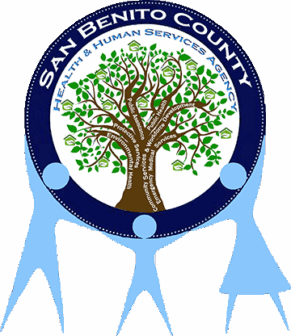Community Health & Equity
The Community Health & Equity unit seeks to promote the best possible health for all San Benito County Residents. Community health is a shared resource that should be equitably accessible for all county residents. We aim to recognize the impact of social, economic, and environmental determinants of health and turn data into actionable information to foster health for everyone.
Equity is often used interchangeably with equality, but there’s a core difference: Where equality is a system in which everyone is offered the same opportunities regardless of circumstance, equity distributes resources based on needs. We live in a disproportionate society, and equity tries to correct its imbalance by creating more opportunities for people who have historically had less access.
Contact us at che@sanbenitocountyca.gov to share your vision about community health and equity for San Benito County.

diverse array of public and private organizations and community members looking to identify and address priority health issues. SBCCH brings
together those passionate about promoting health and wellness within San Benito County.
The Community Health Coalition aims to improve the well-being of individuals and families in San Benito County. The Community Health
Assessment (CHA) guarantees that we possess the necessary information to progress toward the goals of improving community health. A
Community Health Assessment (CHA) involves collecting and analyzing primary and secondary data for the entire county, pinpointing strengths,
resources, and areas for improvement. To ensure the information remains current and pertinent, CHAs are usually developed every three years.
Community groups, stakeholders, and policymakers can use the information within a CHA to create programs, set policies, and allocate
resources efficiently. Additionally, a CHA forms the foundation for a Community Health Improvement Plan (CHIP), aiding San Benito County and
its community partners in addressing some of the key needs of the community, and thus reducing health outcomes and inequities.
CHIP partners work together on identifying and addressing priorities that would make San Benito County a healthier place. The Community
Health Improvement Plan is the roadmap of ideas that Community Health partners will work together to implement and improve upon an area
of need identified within the Community Health Assessment.
The entire heath improvement process helps in identifying and assessing the health needs and priorities of a community. This is crucial for
understanding the unique challenges and health issues that residents face. The collaboration encouraged by the process enhances the
effectiveness of interventions and promotes a holistic approach to health improvement. The information collected in both the CHA and CHIP
sparks action in accomplishing the following:
- Share data with major health providers to inform healthcare delivery.
- Develop policies and improve actions to target efforts that promote health.
- Allows local organizations to apply for funding to address top health needs in the community.
- Promote health equity by addressing disparities and ensuring that interventions benefit members of the community, regardless
of socioeconomic status, ethnicity, or other factors.
Health is the state of complete physical, social, and mental well-being, extending beyond the mere absence of disease or infirmity. (1)
Equality is achieved when each person or group of people is given the same resources or opportunities. This often involves a uniform approach,
assuming that everyone can use the same resources in a similar way.
In contrast, equity acknowledges that each person or group of people has different circumstances and plays a major part in achieving fairness.
Equity embraces diversity by evaluating individual needs and allocating resources to address those unique requirements. This ensures that
everyone has equal access to opportunities and success, leveling the playing field so that the needs of all individuals are considered, and
resources are adjusted accordingly, allowing everyone to start from an equal standpoint. (2)
The state in which everyone has a fair and just opportunity to attain their highest level of health. Health equity refers to efforts to ensure that
all people have full and equal access to opportunities that enable them to lead healthy lives. Achieving this requires focused and ongoing societal
efforts to address historical and contemporary injustices; overcome economic, social, and other obstacles to health and healthcare; and
eliminate preventable health disparities. (3, 4)
Health disparities are a particular type of health difference linked with social, economic, and/or environmental disadvantage. Health disparities
adversely affect groups of people who have systematically experienced greater obstacles to health based on their racial or ethnic group; religion;
socioeconomic status; gender; age; mental health; cognitive, sensory, or physical disability; sexual orientation or gender identity; geographic
location; or other characteristics historically linked to discrimination or exclusion. (3)
Types of health disparities that stem from unfair and unjust systems, policies, and practices and limit access to the opportunities and resources
needed to live the healthiest life possible. (4)
Social determinants of health (SDOH) are the conditions in which people are born, live, learn, work, play, worship, and age that have a major
impact on people’s health, well-being, and overall quality of life. They are nonmedical factors that influence health outcomes. SDOH contributes
to wide health disparities and inequities. Some examples of SDOH include safe housing, education and job opportunities, access to healthy food
and physical activities. (5)
Inequities in health status are quite literally a matter of life and death, shown by differences in death rates and life expectancy among the state’s
most vulnerable populations. Similar gaps among population groups exist for numerous chronic health conditions that drive the disparities in
death rates. Beyond the moral case for addressing inequity, there is also a strong economic argument. Reducing health inequities will yield
savings in health care costs. A study in 2011 estimated that more than 30 percent of direct medical costs faced by African Americans, Hispanics,
and Asian Americans were excess costs due to health inequities – more than $230 billion over a three-year period, plus indirect costs of $1
trillion in lower workplace productivity due to associated illness and premature death. That three-year total of “excess costs” due to health
disparities is equal to approximately half the total of all U.S. health care spending. (6)

When it comes to expanding opportunities for health, thinking the same approach will work universally is like expecting everyone to be able to ride the same bike. (Reproduced with permission of the Robert Wood Johnson Foundation, Princeton, N.J.)
1 World Health Organization, Health and Well-being. Accessed January 11, 2024. https://www.who.int/data/gho/data/major-themes/health-and-well-being.
2 George Washington University. Equity vs. equality: what’s the difference? November 5, 2020. Accessed January 11,
2024. https://onlinepublichealth.gwu.edu/resources/equity-vs-equality
3 US Department of Health and Human Services, Office of Disease Prevention and Health Promotion. Health equity in Healthy People 2030. Accessed January 11,
2024. https://health.gov/healthypeople/priority-areas/health-equity-healthy-people-2030
4 Braveman P, Arkin E, Orleans T, Proctor D, Plough A. What is health equity? Robert Wood Johnson Foundation. May 1, 2017. Accessed January 1,
2014. https://www.rwjf.org/en/library/research/2017/05/what-is-health-equity-.html
5 US Department of Health and Human Services, Office of Disease Prevention and Health Promotion. Social Determinants of Health. Accessed January 11, 2024.
https://health.gov/healthypeople/priority-areas/social-determinants-health
6 California Department of Public Health, Office of Health Equity. Health Equity FAQs. December 21, 2023. Accessed January 11, 2024.
https://www.cdph.ca.gov/Programs/OHE/Pages/OfficeHealthEquity.aspx
7 World Health Organization, Health and Well-being. Accessed January 11, 2024. https://www.who.int/data/gho/data/major-themes/health-and-well-being.
8 George Washington University. Equity vs. equality: what’s the difference? November 5, 2020. Accessed January 11,
2024. https://onlinepublichealth.gwu.edu/resources/equity-vs-equality
9 US Department of Health and Human Services, Office of Disease Prevention and Health Promotion. Health equity in Healthy People 2030. Accessed January 11,
2024. https://health.gov/healthypeople/priority-areas/health-equity-healthy-people-2030
10 Braveman P, Arkin E, Orleans T, Proctor D, Plough A. What is health equity? Robert Wood Johnson Foundation. May 1, 2017. Accessed January 1,
2014. https://www.rwjf.org/en/library/research/2017/05/what-is-health-equity-.html
11 US Department of Health and Human Services, Office of Disease Prevention and Health Promotion. Social Determinants of Health. Accessed January 11, 2024.
https://health.gov/healthypeople/priority-areas/social-determinants-health
12 California Department of Public Health, Office of Health Equity. Health Equity FAQs. December 21, 2023. Accessed January 11, 2024.
https://www.cdph.ca.gov/Programs/OHE/Pages/OfficeHealthEquity.aspx


